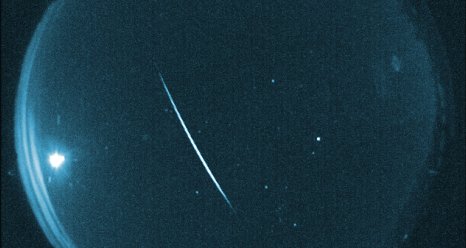Tonight will see the peak of the Quadrantid meteor shower, one of the lesser-known meteor showers of the year. It won’t be as big or bright as some of the more famous showers like the Geminids or the Leonids, but it’s still a great excuse to head out and do some stargazing to celebrate the new year.
If you’d like to check out this event, we have advice on how to watch the shower in person — or a livestream option for those who fancy seeing the sights without venturing out into the cold.
What is the Quadrantid meteor shower?

A meteor shower occurs when Earth passes through the debris left behind by an asteroid or comet. As this debris is in one place in Earth’s orbit, meteor showers happen yearly at roughly the same time each year. The Quadrantids are thought to be the result of debris from asteroid 2003 EH1, which is thought to have once been a comet. A comet is made up of ice and rock, but over time this ice is expelled as the body comes close to the sun and warms up, creating a comet’s distinctive tail. Once all a comet’s ice has been expelled in this way, the remaining core of rock is more like an asteroid.
The Quadrantid meteor shower peaks on the night of 3rd to the 4th of January, with up to 110 meteors visible per hour at the peak. These meteors are visible as bright streaks in the sky. This is caused by debris from the asteroid entering the atmosphere at up to 40 miles per second, burning up, and creating the streaks of light.
Unlike other meteor showers, which can last all night, the Quadrantids peak during a window of just a few hours, so if you want to watch the shower, then you need to be careful with your timing.
How to watch the Quadrantid meteor shower
To catch the meteors at their peak, you’ll need to look up at the sky during a particular period. According to NASA, “the best time to look may be the morning of January 4 for the hour or two before the moon rises (at 2:29 a.m. ET), as moonlight will interfere at the time of the predicted peak at 4 a.m. ET.” Of course, you’ll need to hope for clear skies as well, as meteors won’t be visible if there is cloud cover.
For the best view of the shower, find a location away from bright lights and bring a chair with you. Sit back and look up at the sky — you don’t need a telescope or binoculars — and give your eyes around half an hour to adjust to the darkness. The meteors should be visible across the entire sky, so wrap up warm and be patient.
However, if you don’t want to head out, then you can also check out the livestream from the Subaru telescope in Hawaii, which will provide its stunning (and usually cloudless) view of the sky, including the meteor shower, tonight.
Editors’ Recommendations



